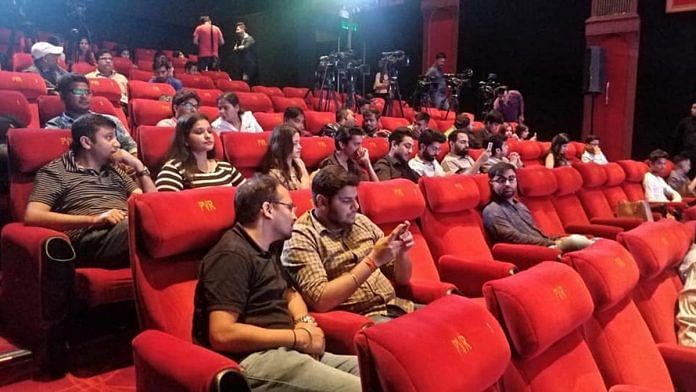New Delhi: Looking to boost the dwindling number of cinema screens across the country — which have adversely affected the growth of the Indian film industry — the Narendra Modi government has asked states to revise and ease the complex rules and procedures for multiplex and cinema hall clearances.
The Information and Broadcasting (I&B) Ministry’s move comes amid other steps that followed Prime Minister Modi’s meeting with a film industry delegation in December 2018 to discuss ways to encourage the sector.
These include the reduction of GST on movie tickets, setting up a film portal to provide hassle-free clearances for shooting in Indian locations and a proposed amendment of the Cinematograph Act — which the government introduced in Rajya Sabha on Wednesday — to impose higher penalties on film piracy.
According to a report, India loses $2.5 billion to online movie piracy every year.
Also read: National Museum of Indian Cinema set to open after delay of two decades
Why showbiz matters
The domestic film industry is an important element of India’s soft power. According to a 2016 report by Deloitte, India’s cinema sector employs nearly 2,00,000 people.
While presenting the interim Budget, Finance Minister Piyush Goyal assured single-window clearance. He said that the government wanted to promote the industry owing to its potential as a major employment generator.
The film sector produces nearly 2,000 films a year and the media and entertainment business contributes significantly to the economy — including providing employment opportunities — yet the number of screens is low given India’s population.
The FICCI’s pre-budget memorandum 2019-20 also stated that the film industry’s potential remains largely untapped with India having less than one-fifth of the screens in developed markets such as the US and China.
Diktat to states
The issue of single-window clearance and inadequate number of screens was recently brought to the notice of the states by I&B Secretary Amit Khare in a letter.
“For Indian film industry, an important concern is decreasing number of single screen theatres, particularly in tier-2, tier-3 cities,” wrote Khare, adding that the trend had hampered the growth of the film sector in India in the last few years.
“The screen density in India per million population is far less as compared with most of the film producing nations as per available statistics. At the end of 2016, China has over 35,000 screens as compared to 8,500 screens in India for almost equal size of population.”
Khare urged the states to review the decades-old rules and guidelines and the large number of clearances required to open new cinemas and multiplexes.
He highlighted that increasing the number of screens may increase revenues, generate employment and attract higher investment in the industry.
At present, Khare said, multiple authorities such as urban local bodies, roads and buildings, electricity, fire, health, police and collectors have to be consulted to obtain permission for opening a cinema hall. He suggested that a film cell incorporating relevant departments of the state be opened.
To achieve this, he added, there should be a single-window policy online. The district magistrate as a nodal officer or any other suitable officer must process and approve new applications and issue licences for establishing new theatres and mini-theatres within 30 days.
Also read: Govt’s film preservation project in ‘total disarray’, says I&B-appointed inquiry panel



